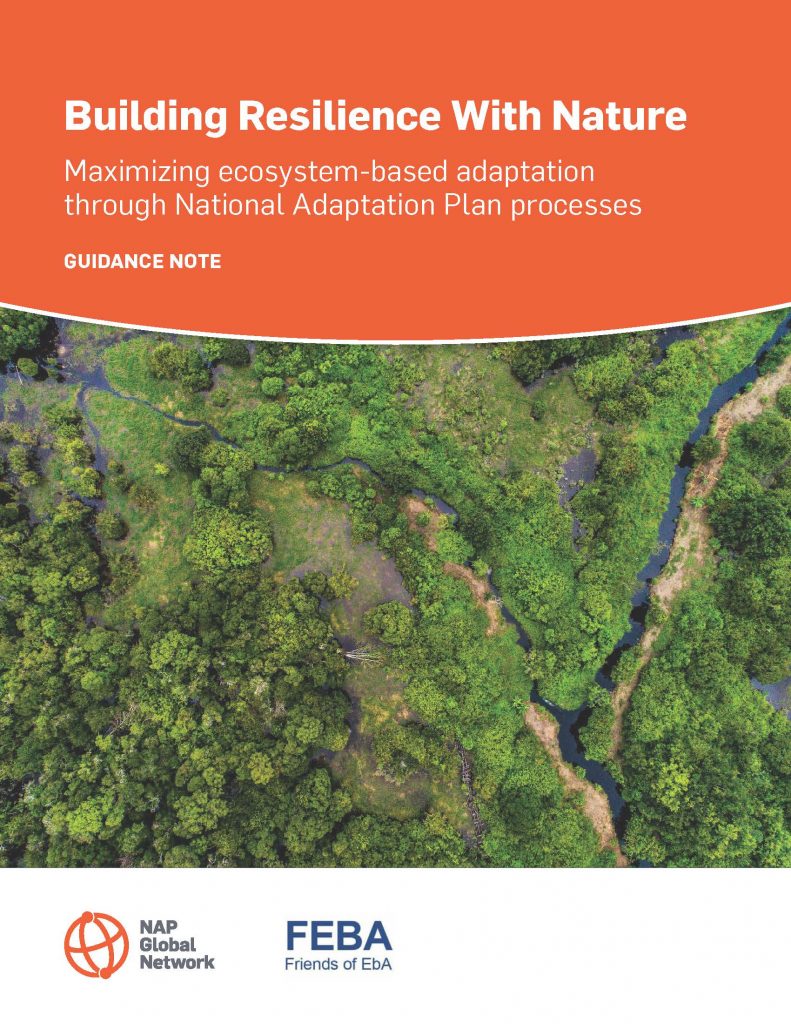
Building Resilience With Nature: Maximizing Ecosystem-based Adaptation through National Adaptation Plan Processes
Guidance Note
Ecosystem-based Adaptation (EbA) has the potential to generate economic returns and provide multiple benefits, such as improved health, biodiversity protection, food security, and alternative livelihood opportunities, all of which can build resilience to climate change. With over 10 years of application in global and local contexts, EbA has emerged as an essential approach to adaptation that is effective in building ecological, social, and economic resilience. To fully maximize and deliver EbA at the scale and pace needed, it must be put at the heart of countries’ national development and climate strategies. The National Adaptation Plan (NAP) process provides an opening to do just this. By enabling countries to strategically integrate adaptation into their decision making, planning, and budgeting, the NAP process strives to make adaptation part of standard development practice.
The following guidance note presents “why” and “how” the NAP process can be utilized as a key mechanism and driver to mainstream and upscale EbA. It is based on a recent analysis of 19 completed NAP documents that reviewed the inclusion of ecosystems and uptake of EbA measures. The document builds on the lessons learned from the review and identifies guiding principles and actions accordingly. It also presents an overview of ecosystems, ecosystem services and their role in adaptation, and how managing their transformation under a changing climate can contribute to reducing climate risks and impacts for both people and ecosystems. Furthermore, it focuses on guiding principles and recommended actions along the steps of the NAP process to integrate and enhance EbA.
Related content:
- Report | Building Resilience With Nature: Ecosystem-based Adaptation in National Adaptation Plan Processes
Publisher: International Institute for Sustainable Development (IISD)